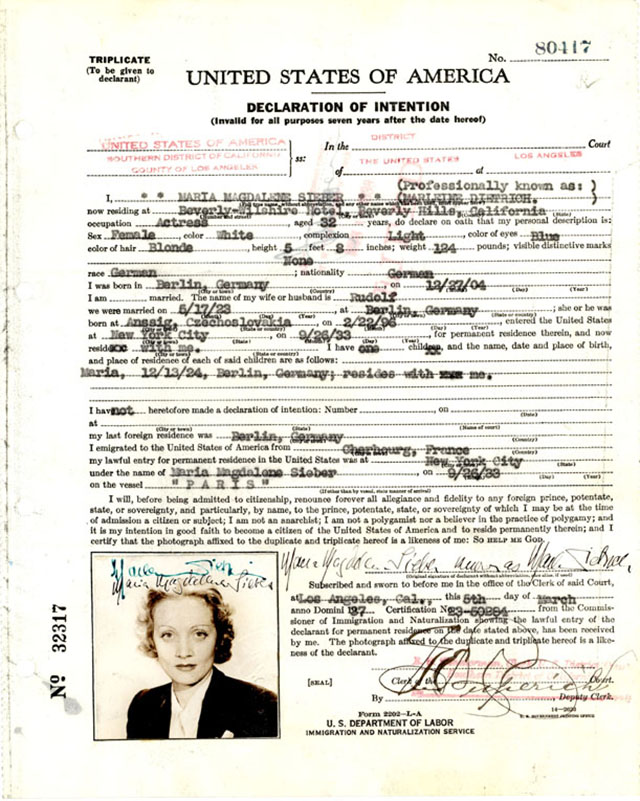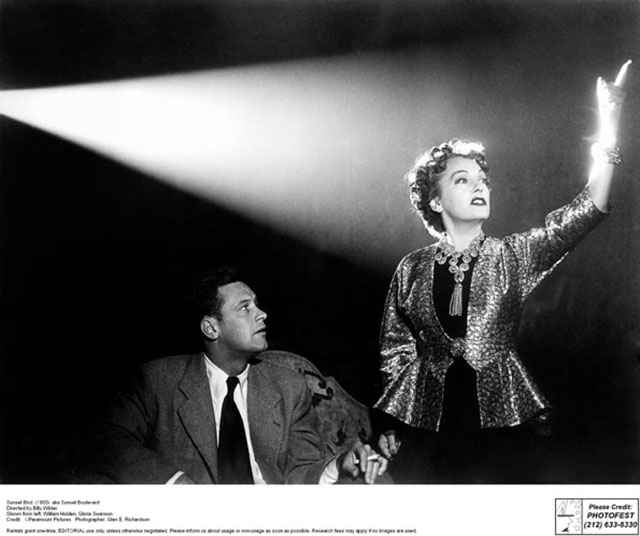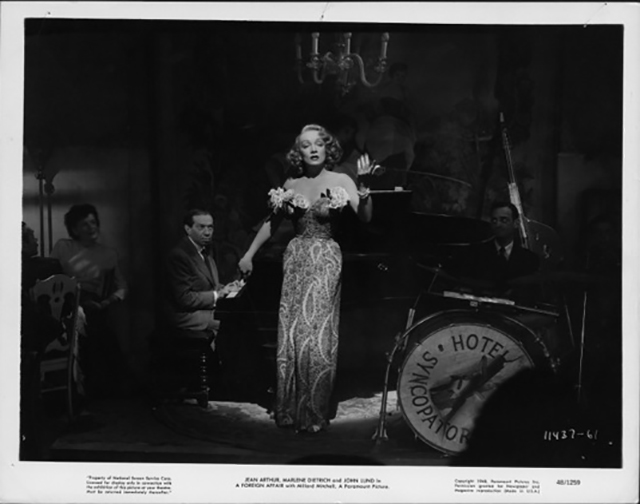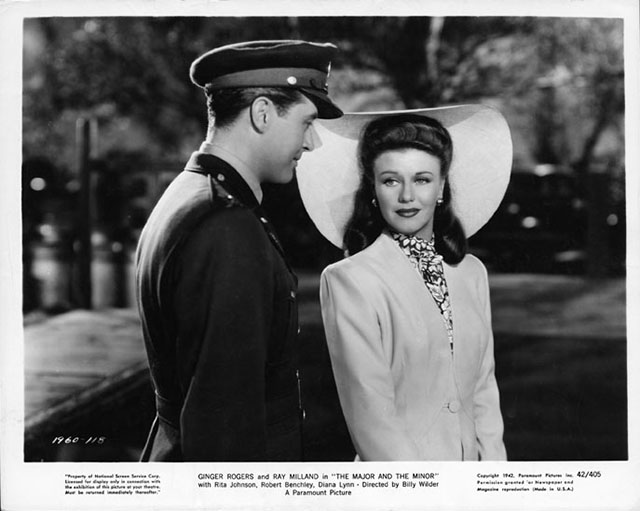The 1942 classic Casablanca follows a complicated love story between two star-crossed lovers, played by Humphrey Bogart and Ingrid Bergman. But it’s also about refugees fleeing their home country for safety. It’s an apt metaphor for the experience of Jews escaping Nazi Germany, and that’s no coincidence, as almost everyone who worked on the film was an immigrant.
“It’s as much an exile film as it is a romantic drama,” said Doris Berger, curator of Light & Noir: Exiles and Émigrés in Hollywood, 1933-1950, on display at the Skirball Cultural Center from Oct. 23 to March 1. “In Rick’s Café, where everyone comes to but everyone leaves and has to go someplace else, it’s a transitory space in itself.”
Casablanca is among the better-known films included in the exhibition, which begins with the rise of Nazis in Germany and ends with the congressional anti-communist hearings and the Hollywood blacklist.
Jews held prominent positions in Germany’s film industry when the Nazis came to power. Their stories are described in a concurrent show at the Los Angeles County Museum of Art (LACMA) called Haunted Screens. German Expressionist films such as Robert Wiene’s The Cabinet of Dr. Caligari and Fritz Lang’s Metropolis employed strange camera angles, dark shadows and mythical figures, the visual touchstones of what became film noir. The LACMA exhibit tells the story using film footage, photographs, props, costumes, memorabilia — even furniture from the set of Rick’s Café in Casablanca.
“Since our show focuses on the 1920s and the years leading up to the rise of national socialism and World War II, we’re really thrilled that the Skirball exhibition will pick up right where we leave off, and trace the achievements of émigré filmmakers here in Hollywood and show some of those aesthetic connections, but also those biographical links,” said Britt Salvesen, curator of the LACMA show.
“One of the films we feature with some drawings and photographs and posters is The Blue Angel, which is one of Marlene Dietrich’s breakout roles, directed by Josef von Sternberg, and they both emigrated to Hollywood shortly after that film was made,” Salvesen said. “We can look at it now as kind of their final statement on German soil. And then of course they went on to have new chapters in their career once they came here.”
The Nazis forbid Jews to work in the movie business. Prolific comedy director Henry Koster left Berlin for Budapest, where there was still a German-speaking film market. Billy Wilder went to Paris, and Lang absconded to London. Many went directly to the United States.
An estimated 800 German-speaking Jews emigrated and worked in Hollywood during World War II, from below-the-line crew, like tailors and prop designers. They were assisted by Jews in Hollywood, like director Ernst Lubitsch and talent agent Paul Kohner, who created the European Film Fund.
“Those who were already here and established, contributed money to a fund, to help get not only visas and affidavits, but established bank accounts and guaranteed work for European Jews who were fleeing Hitler’s regime,” said Pancho Kohner, Paul Kohner’s son.
One room of the exhibit recreates Kohner’s office, with letters and advertisements he wrote, trying to convince producers to hire European Jews.

The Skirball exhibition highlights one film genre specific to the time: the anti-Nazi film. It wasn’t until well into the war and the systematic genocide of Jews in Europe that a strong Nazi critique became apparent in American cinema.
“Some studios, like Warner Bros., really tried to make films that were critical toward the Nazis, since 1934, but couldn’t get it through the censorship board for five years,” Berger said. “So it took them until 1939 to make the first anti-Nazi film.”
The chief censor of the Hollywood film industry in the late 1930s was Joseph Breen, a notorious anti-Semite. Breen specifically warned Hollywood producers to avoid tackling the Nazi mistreatment of Jews altogether, saying at the time: “There is a strong pro-German and anti-Semitic feeling in this country … and while those who are likely to approve of an anti-Hitler picture may think well of such an enterprise, they should keep in mind that millions of Americans might think otherwise.”
One side effect of the censors was that directors had to discreetly slip in risqué jokes. The phrase “the Lubitsch touch” is used to describe the Jewish director’s very subtle style of comedy.
“You heard things behind the doors,” Berger said. “You didn’t see them, but you could imagine them.”
A strange irony is that one of the few roles available for German immigrant actors, because of their strong accents, was as a Nazi soldier. Martin Kosleck was not Jewish but was strongly opposed to the Nazis, yet he portrayed an SS trooper and a concentration camp officer, and played the role of Joseph Goebbels, Adolf Hitler’s propaganda minister, in five films.

Shown from left: William Holden, Gloria Swanson
The first anti-Nazi movie, Confessions of a Nazi Spy, an example of film noir, is contrasted in the Skirball exhibit with Lubitsch’s comedic satire To Be or Not to Be. The Jewish émigré sensibility, combining humor and sorrow, molded the comedy films of that time.
“They are funny, but they’re not only funny,” Berger said. “Sometimes you don’t know whether to laugh or cry about something. It kind of sticks in your throat.”
Wilder’s 1948 romantic comedy, A Foreign Affair, stars Marlene Dietrich as an ex-Nazi cabaret singer struggling to survive in the rubble of Berlin. Dietrich chose to wear the same dress in the movie that she wore while entertaining U.S. troops overseas, another subtle act of resistance. That original dress is featured in the exhibition, alongside photos of her wearing it for American soldiers.
Hollywood Jews socialized together, in salons organized at various movie moguls’ homes, where they would discuss current events of the U.S. and Europe. But not all émigrés had a rosy relationship. Director Lang collaborated with poet Bertolt Brecht on “Hangmen Also Die!” but they clashed over Brecht’s struggle to write for the screen. It was his first, and final, script for a Hollywood film.
The Skirball also examines the cultural assimilation of Jews in Hollywood. Kohner sent Christmas cards every year to his associates, including fellow Jews. Nicola Lubitsch, who was interviewed for the show, remembers her father as a completely non-practicing Jew.
“It was part of his identity, but it was never spoken of,” said Lubitsch.

In Rick’s Café in Casablanca, the camera focuses on the tears in the immigrant actors’ eyes — an example of reality and fiction merging together. Hollywood – which has always been a vehicle for exporting American culture to the rest of the world – became a way for Jewish immigrants to project their own outlook of the world – a view influenced by their experiences in Europe.
“Hollywood films, until World War II, are still very optimistic and positive, and you don’t get the kind of ambiguous characters, you don’t get these shades of grey between good and evil, that you do suddenly find in these film noirs,” said Jan-Christopher Horak, director of the UCLA Film & Television Archive.
A second exhibition at the Skirball Cultural Center, The Noir Effect, examines the cultural influence of film noir on the following decades of American culture, from films such as Ridley Scott’s “Blade Runner and David Lynch’s Mulholland Drive, to photographer Cindy Sherman, painter Ed Ruscha and the imagery of graphic novels, children’s books and video games such as L.A. Noire. It’s further proof that the legacy of Hollywood’s Jewish émigrés continues, decades later.
Light & Noir: Exiles and Émigrés in Hollywood, 1933-1950, and The Noir Effect, both run at the Skirball Cultural Center in Los Angeles from Oct. 23-March 1. For more information, visit skirball.org.
Haunted Scenes: German Cinema in the 1920s is currently running at the Los Angeles County Museum of Art until June 4, 2015. For more information, visit lacma.org.

















